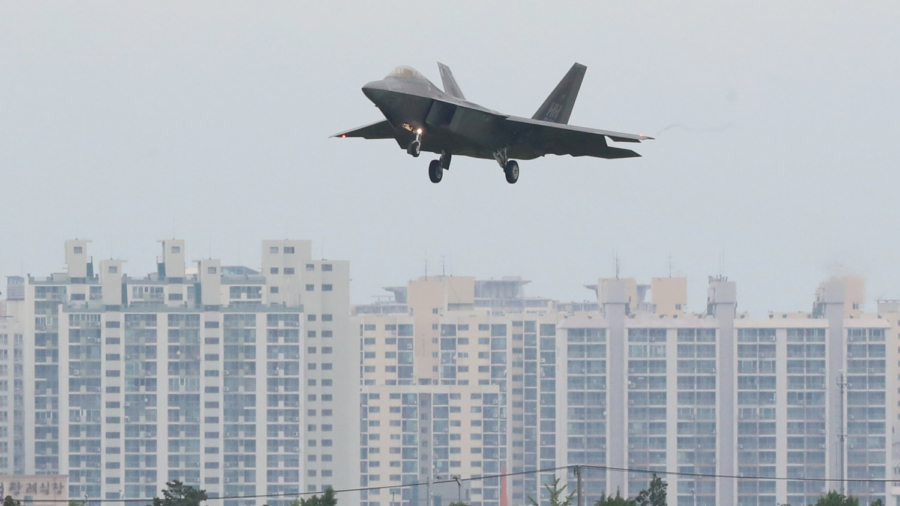Two Alaska-based U.S. fighter jets intercepted two Russian bomber planes over the Arctic Ocean, said officials in a statement on Sept. 7.
The North American Aerospace Defense Command (NORAD) stated that two Russian Tu-95 long-range bombers were monitored by U.S. F-22 jets until they flew out of the Alaskan Air Defense Identification Zone. The incident occurred on Sept. 1.
The Russian planes didn’t enter Canadian or U.S. airspace at any point, the statement added.
“As the command designated with aerospace warning and aerospace control mission for Canada and the United States, NORAD monitors all air activity emanating from within an outside North American airspace,” said NORAD in the statement.
“We do not identify the specific distance the aircraft flew from the west coast of Alaska due to operational security reasons … However, the two Russian Tu-95 bomber aircraft were intercepted and monitored” by the F-22s until they left, NORAD added.
“NORAD maintains constant vigilance in the defense of Canadian and United States airspace 24 hours a day, seven days a week, 365 days a year,” it said.
F-35 Gets a Try at Sea
In late August, the U.S. Navy gave journalists a rare chance to see its version of the single-seat F-35 being tested for battle, Reuters reported. Video footage (which can be seen above) shows the plane launching from an aircraft carrier.
If the F-35 passes its final tests, the jet’s first deployment could come in 2021.
The single-engined F-35 looks quite similar to the larger twin-engined Lockheed Martin F-22 Raptor, and it has design elements from the plane.
Meanwhile, maker Lockheed Martin is pitching a new F-35/F-22 plane hybrid to the U.S. Air Force, Defense One reported on Aug. 30.
“You’re building a hybrid aircraft,” David Deptula, a retired Air Force lieutenant general who is now an official at the Mitchell Institute for Aerospace Studies. “It’s not an F-22. It’s not an F-35. It’s a combination thereof. That can be done much, much more rapidly than introducing a new design.”
The hybrid plane—similar to one Lockheed is pitching to Japan— would use the F-35’s more modern mission system and “other advancements in the stealth coatings and things of that nature,” said an unnamed official in the Defense One report.
“There’s a lot of potential in this idea,” Deptula added. “I’m not suggesting that we jump right into it and embrace it, but from the Japanese perspective when they are looking at and willing to invest in this kind of an alternative as opposed to trying to build an indigenous aircraft that’s not going to get close to what an F-22 can already deliver. It’s a smart move on their behalf.”
But according to a person familiar with Lockheed’s new plans for a plane, “You cannot operate a fourth-generation airplane inside those threat scenarios. The move clearly needs to be to fifth-generation airplanes to have any operational capability that’s needed to execute those scenarios.”
Reuters contributed to this report.
From The Epoch Times


